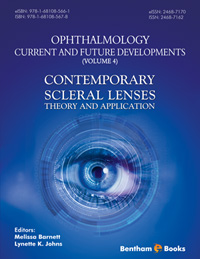Abstract
SHS investigation development is considered from the geographical and historical viewpoint. 3 stages are described. Within Stage 1 the work was carried out in the Department of the Institute of Chemical Physics in Chernogolovka where the scientific discovery had been made. At Stage 2 the interest to SHS arose in different cities and towns of the former USSR. Within Stage 3 SHS entered the international scene. Now SHS processes and products are being studied in more than 50 countries.
Abstract
Systematic evaluation of scleral lens fitting is essential to identify and address areas of concern at the outset with a view to minimizing the risk of potential physiological complications. Thorough and consistent evaluation ensures proper functionality, comfort and safety for the patient. This chapter details scleral lens evaluation techniques ranging from immediately after application to subsequent fitting evaluations. Scleral lens evaluation can be intimidating relative to other contact lens modalities since the lenses are much larger and have more variables that can be changed. Systematic and methodical evaluation ensures that practitioners do not overlook key findings of ill-fitting scleral lenses. After scleral lenses are removed, the ocular surface tells its story as well. At every evaluation, practitioners should always remember to evaluate the eye without the lens to ensure that the patient is not compromised and can continue to enjoy all the properties that a scleral lens offers.
Keywords:
Blanching, Bubbles, Clearance, Compression, Conjunctiva, Conjunctival hypertrophy, Evaluation, Fluorescein, Hyperemia, Impinging, Inside-out evaluation, Light, Limbus, OCT, Scleral compression, Settling, Slit lamp, Staining, Surface wettability, Toricity, Vessels.
Recommended Chapters
We recommend

Authors:Bentham Science Books






